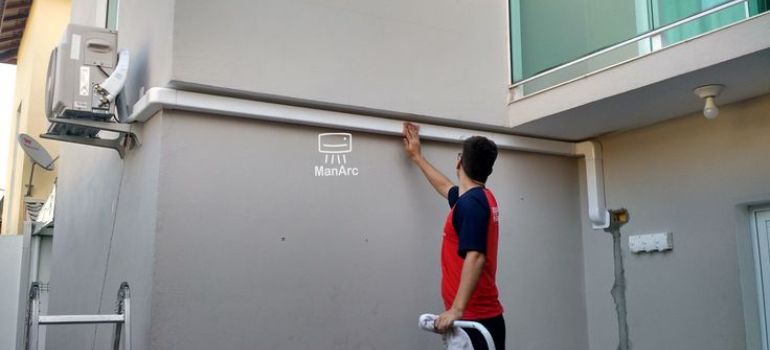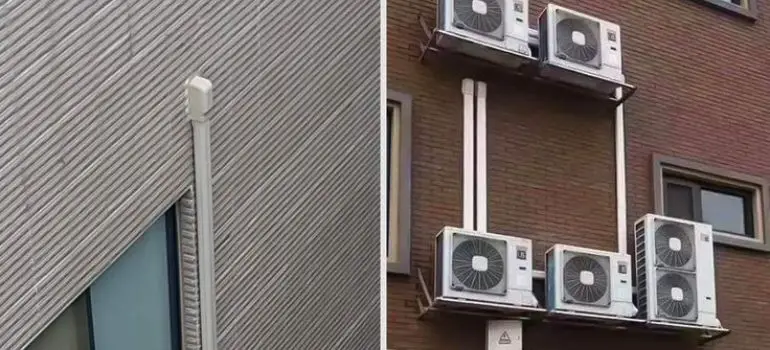Introduction
When it comes to maintaining a comfortable indoor environment, your home’s air conditioning system plays a vital role. However, if there are gaps or openings around the AC lines where they enter your house, it can lead to energy wastage and a less efficient cooling system. In this article, we will discuss the importance of sealing AC lines into your house and provide you with a comprehensive guide on how to do it effectively.
Why is Sealing AC Lines Important?
Before we dive into the step-by-step guide, let’s understand why it’s crucial to seal AC lines into your house.
Energy Efficiency
Properly sealed AC lines prevent conditioned air from escaping, ensuring your cooling system operates efficiently. This translates to lower energy bills and reduced environmental impact.
Indoor Air Quality
Sealing AC lines helps keep dust, allergens, and pests from entering your home. This leads to better indoor air quality and a healthier living environment.
Extending Lifespan
A well-sealed AC system experiences less wear and tear, potentially extending its lifespan and reducing the need for costly repairs or replacements.
Materials You’ll Need
To get started, gather the following materials:
Tools:
- Screwdriver
- Caulking gun
- Insulation tape
- Utility knife
Materials:
- Caulk or foam sealant
- Weatherstripping
- Insulation sleeves
- Duct tape
Step 1: Locate the Entry Points
Begin by identifying where the AC lines enter your house. Typically, you will find these points on the exterior walls or foundation.
Step 2: Inspect for Gaps
Carefully inspect the area around the entry points for any gaps or openings. Even small openings can let in hot air and pests.
Step 3: Seal with Caulk or Foam
Use a caulking gun to apply a generous bead of caulk or foam sealant around the gaps. Ensure a complete seal to prevent any air leakage.
Step 4: Apply Weatherstripping

Place weatherstripping around the AC lines where they enter your house. This will create a tight seal and help keep out drafts and pests.
Step 5: Insulate the Lines
Wrap the AC lines with insulation sleeves to prevent heat exchange with the outside environment. Secure them in place with duct tape.
Step 6: Secure with Insulation Tape
Use insulation tape to seal the edges and joints of the insulation sleeves. This ensures a snug fit and further prevents air leakage.
Step 7: Check for Leaks
After completing the sealing process, check for any remaining gaps or leaks. Address them promptly to ensure a fully sealed entry point.
Additional Tips for Maintenance
In addition to sealing your AC lines, here are some maintenance tips to keep your cooling system running smoothly:
Regularly Clean the AC Filters
Dirty filters can reduce your AC’s efficiency. Clean or replace the filters every 1-3 months, depending on usage, to ensure optimal airflow.
Schedule Professional Maintenance
Consider scheduling annual professional maintenance for your AC system. Technicians can identify and address issues before they become major problems.
Keep the Area Around AC Lines Clear
Ensure that the area around your AC lines remains clear of debris, vegetation, and other obstructions. This allows for proper airflow and prevents potential damage to the lines.
Monitor Thermostat Settings
Set your thermostat to a temperature that provides comfort without overworking the system. Programmable thermostats can help you optimize cooling cycles.
Invest in Energy-Efficient Equipment
If it’s time to replace your AC system, consider investing in energy-efficient equipment. Look for units with a high SEER (Seasonal Energy Efficiency Ratio) rating.
Maintaining a Comfortable Home
A well-sealed AC system is just one part of maintaining a comfortable home. To further enhance your living environment, consider the following tips:
Optimize Insulation
Ensure your home is adequately insulated. Proper insulation in walls, attics, and floors can significantly reduce heat transfer, making your home more energy-efficient year-round.
Control Humidity
Maintaining the right humidity level in your home is essential for comfort. Use a dehumidifier in damp conditions and a humidifier in dry climates to achieve the ideal balance.
Upgrade to a Smart Thermostat
Investing in a smart thermostat allows you to remotely control your HVAC system, set schedules, and monitor energy usage. This can lead to significant energy savings over time.
Consider Zoning
Zoning your HVAC system allows you to control the temperature in different areas of your home independently. It’s an efficient way to ensure comfort while saving on energy costs.
Perform Regular HVAC Maintenance
Besides sealing AC lines, regular HVAC maintenance is vital. Clean coils, check refrigerant levels, and inspect for any potential issues to keep your system running optimally.
Environmental Impact
Sealing your AC lines is not only about improving your comfort and saving money; it also has a positive impact on the environment. When your AC system operates efficiently due to proper sealing, it consumes less energy, resulting in reduced carbon emissions. This contributes to a greener and more sustainable future for our planet.
Consider Solar Solutions
If you’re looking to take your energy-efficiency efforts further, consider installing solar panels on your roof. Solar power can offset the electricity needed to run your AC system, making your home even more eco-friendly.
Utilize Natural Ventilation
During mild weather, take advantage of natural ventilation by opening windows and doors strategically. This can reduce your reliance on air conditioning and improve indoor air quality.
Upgrade to Energy-Efficient Appliances
Aside from your AC system, ensure that other appliances in your home are energy-efficient. Look for ENERGY STAR-rated appliances, which consume less energy and help lower your utility bills.
Educate Yourself
Stay informed about the latest advancements in home energy efficiency. Attend workshops, read articles, and consider joining local sustainability groups to learn about new techniques and technologies.
Contribute to Sustainability
As a responsible homeowner, consider adopting sustainable practices beyond your AC system. Reduce, reuse, and recycle to minimize waste, conserve resources, and protect the environment.
Conclusion
By following these steps and effectively sealing the AC lines into your house, you can enhance your home’s energy efficiency, indoor air quality, and the lifespan of your cooling system. Don’t let unwanted air leaks and pests compromise your comfort and budget.
Frequently Asked Questions
It’s a good practice to inspect and reseal your AC lines annually, preferably before the summer season.
It’s recommended to use weather-resistant caulk or foam sealant designed for outdoor use.
While it can be a DIY project for those with some experience, it’s advisable to consult a professional for the best results.
Yes, a well-sealed AC system can lead to noticeable energy savings over time.
High energy bills, uneven cooling, and the presence of drafts or pests are common signs of poorly sealed AC lines.



